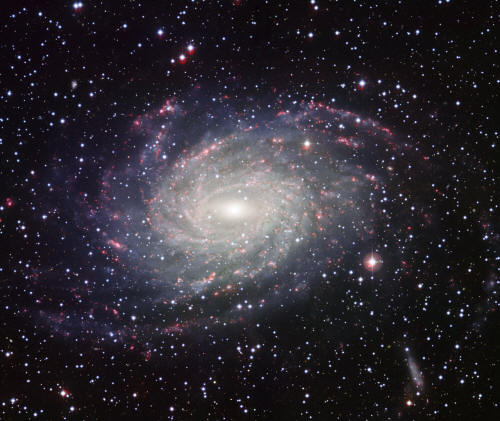|
by Mel Acheson
The spiral galaxy NGC 6744.
Credit: ESO
A nearby spiral galaxy in the southern
sky looks like the Milky Way - except it is twice the size.
The only big discrepancy is that NGC 6744 is nearly twice the size of the Milky Way - 200,000 light-years across instead of 100,000 for our galaxy.
This size is easily calculated from the
galaxy’s measured angular diameter and its distance. The distance,
too, is easily calculated from the galaxy’s measured
redshift. The result is as certain
as mathematics can be.
A tug of skepticism on that thread unravels the entire fabric. And there is much evidence to add weight to the tug.
Many previous Pictures of the Day have featured the discordant evidence that undermines this assumption:
NGC 6744 is at the low end of supersizing, calculating out to be twice the size of the Milky Way despite appearing to be the same in all other respects.
NGC 309, on the other hand, is a spiral with a structure similar to that of NGC 6744 but with a much larger redshift. Hence, its calculated distance is much greater, requiring much greater size for its angular diameter. If placed at the same distance as M81, one of the largest of the nearby spiral galaxies, it would be four or five times the size of M81.
Because its
HII (star-forming) regions are
comparable in relative size (to itself) as those in NGC 6744, not
just the size but the scale of the galaxy must be four or five times
larger.
|

